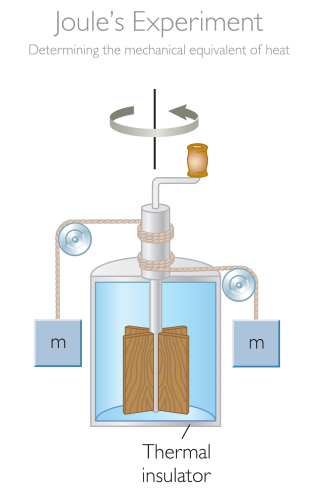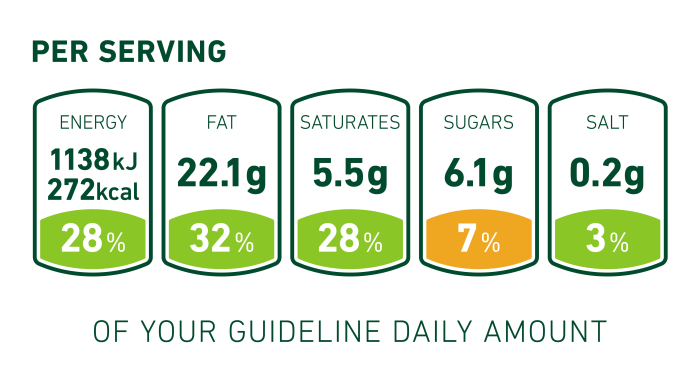Joules
The standard unit of energy is the Joule. It is named after James Joule, a scientist who in the 19th Century famously set up some apparatus as shown:

When the weights were dropped to the ground, they spun the paddle inside the water, which stirred it and raised its temperature. Joule showed that when the weights were dropped from a greater height, the water experienced a greater increase in temperature. Joule had shown that the falling weights had transferred their energy into heat as they slammed against the ground, and had also proved the theory that energy is always conserved. (i.e. energy cannot be created or destroyed).
Alternative units to Joules
The Joule is an extremely small unit. For example, a simple 100 Watt lightbulb switched on for 5 minutes will transfer 30,000 Joules of energy! If you think about all the energy you use every day and tried to calculate it in Joules, your answer would be too enormous to make sense of.
An alternative to Joules is the kilojoule (kJ). A kilojoule is literally 1,000 Joules, and this makes large values of energy easier to work with. To convert J to kJ, you just have to divide by 1,000.
There is also the kilowatt-hour (kWh), which is the amount of energy transferred by 1 kilowatt (which equals 1,000 Watts) of power in one hour. It sounds complicated, but it just uses the simple rule that energy = power x time, so if you have a power in kilowatts (kW) and a time in hours (h), you just have to multiply them together. We use kWh when we look at energy bills, as the value in Joules would just be too massive otherwise.
An energy of 1 kWh is the same as 3,600,000 Joules.
Energy in food
Finally, we can measure energy in calories. You have probably heard of this unit when talking about diets and you have probably seen a label such as this on food packaging:

One calorie is approximately 4,000 Joules. As you can see on the food label, the units are given in kcal, which means '1,000 calories'.
It is a legal requirement for all packaging to tell the consumer the nutritional information in a food product. This is so that the person can decide how much to eat, achieve a balanced diet, and therefore stay healthy. A significant piece of data on these labels is the amount of energy in the food, as we all have a 'guideline daily amount' of energy that we should eat every day. Adults need between 2,000 and 3,000 kcal each day.

Let's have a go at the questions now.








